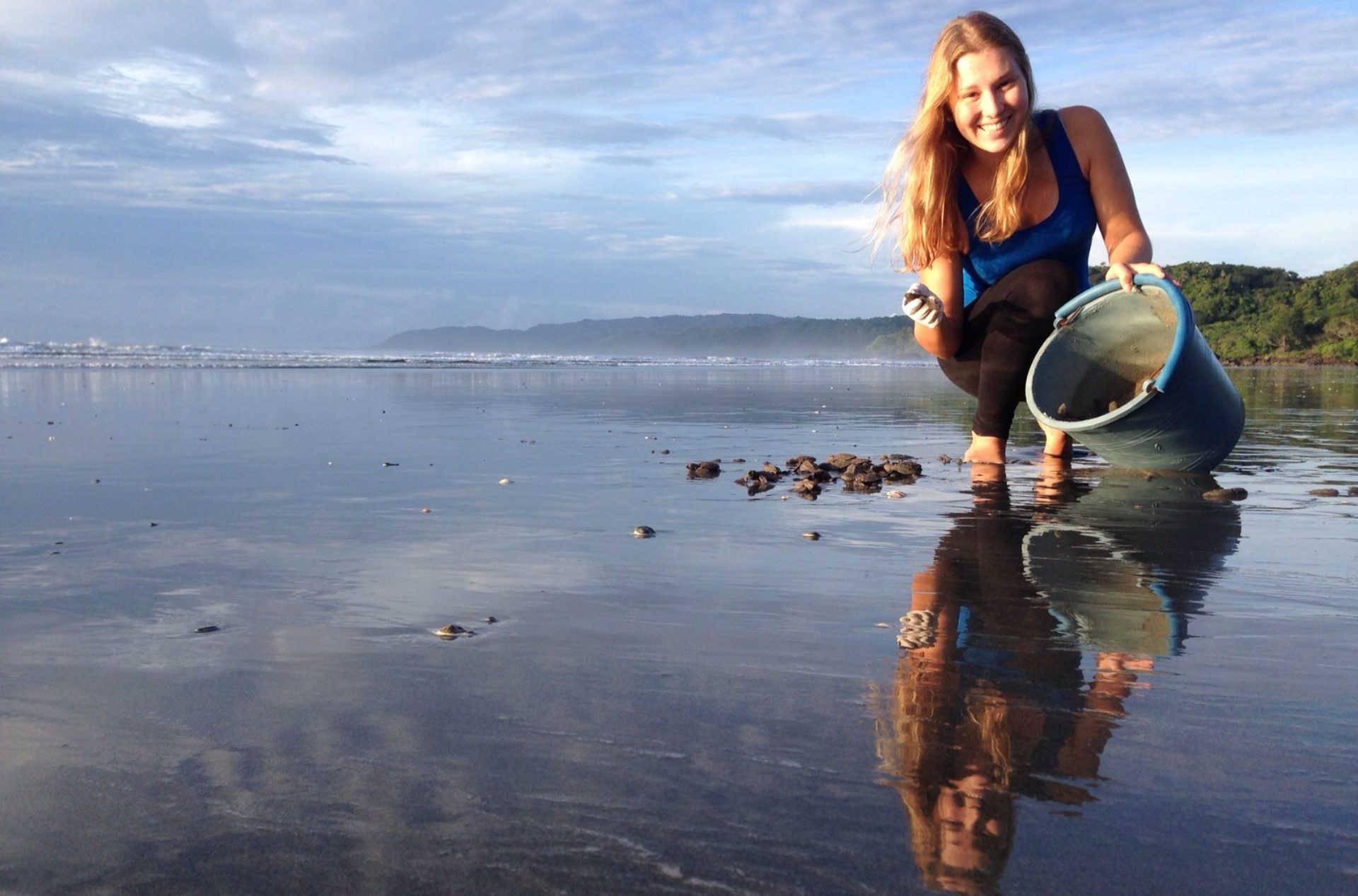Little turtles at Refugio Nacional de Vida Silvestre Romelia
by Fidel Vargas Vargas
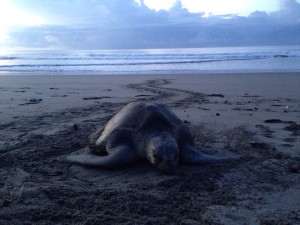
Season 2013-14 work at the Sea Turtle Conservation Project of Refugio Nacional de Vida Silvestre Romelia started in June and ended in January. It was challenging work that began with the building of the hatchery. After that, the beach area where the nests placed had to be cleaned; then the team was ready for night patrols, a highly anticipated and captivating experience. 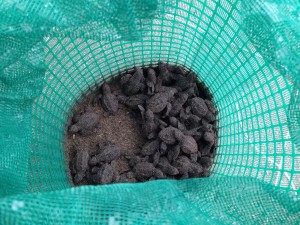 Patrols are nocturnal rounds in sear18.02.13 (13)ch of female turtles that come out of the sea to dig nests on the beach where they lay their eggs. Throughout this process, Romelia’s staff and volunteers collect biometric data about the turtles and their nesting behavior while protecting the eggs from predators and poachers.
Patrols are nocturnal rounds in sear18.02.13 (13)ch of female turtles that come out of the sea to dig nests on the beach where they lay their eggs. Throughout this process, Romelia’s staff and volunteers collect biometric data about the turtles and their nesting behavior while protecting the eggs from predators and poachers.
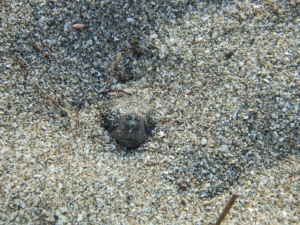
Then there is the excitement of sleepless nights on pins and needles, knowing that the baby turtles are about to pop out from the sand! When the first little heads emerge, the team knows all their efforts have been worthwhile. Seeing thousands of tiny turtles sucking in air, clinging to life, and crawling to start a new life in the sea makes one consider the fragile web that keeps all living beings interconnected.
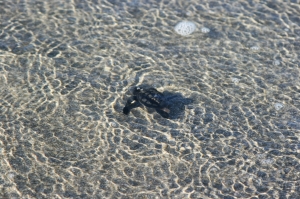
These past season 114 nests relocated into the hatchery, which is 88% of all reported nests; 10,601 eggs were protected, and 9,498 newborns liberated into the sea, which means
a success rate of 89.60%, an excellent accomplishment! Thanks for this season’s great results are due to the committed staff at Romelia, as well as to dozens of volunteers, kind supporters from Montezuma, who lend a hand, and visiting foreign youth. They work hard for the sea turtles of Romelia because they understand that this remote corner of land is a precious piece of the planet we all share.
